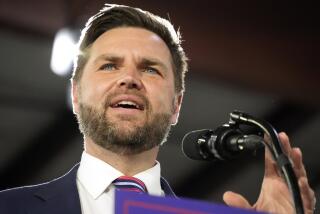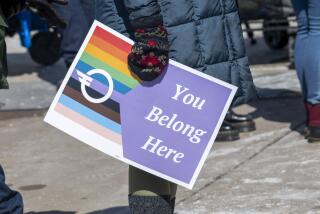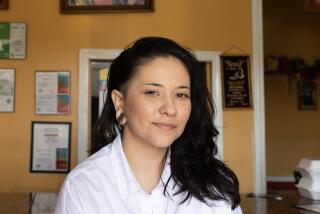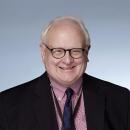Choosing my religion
A colleague and fellow cradle Catholic once told me about a revealing conversation with her parish priest. When she had described an acquaintance as an “ex-Catholic,” the priest objected. There were no ex-Catholics, he said, only bad Catholics.
I wonder what he would have made of this factoid from the Pew Forum’s new “religious landscape survey” of the United States: Overall, 31.4% of U.S. adults say that they were raised Catholic, but only 23.9% of adults identify with the Catholic Church.
Here’s what I make of it as a Catholic whose life spans the pre- and post-Vatican II church: As the church in the United States became less Roman and more catholic (with a small c), it became easier for Catholics to leave the faith of their fathers and embrace the faith of their spouses, co-workers or golf buddies.
There is much talk, especially among politically conservative Catholics, about liberal “anti-Catholicism.” But generations of American Catholics were inculcated with what can only be called anti-Protestantism. The attitude is nicely captured in a scene from “The Cardinal,” a 1950 novel (later given an over-the-top film treatment by Otto Preminger).
The title character, the future Cardinal Stephen Fermoyle, accompanies a bishop named Creedon to a meeting with Protestant clergy at a New York hotel. The young cardinal-to-be imagines that he hears Bishop Creedon muttering: “What in God’s name am I doing here among these psalm singers?”
That was the authentic voice of pre-Vatican II Catholicism, and it reflected a difference between Protestants and Catholics that was as much cultural as it was theological.
I made my first Communion nine years after “The Cardinal” was published, and the Mass was in Latin. Twelve years after that, my youngest sister made her first Communion and the Mass was in English. Sixteen years after that, when she accompanied her Lutheran husband to Sunday Eucharist at his childhood church, she felt right at home. And the revolving church door swings both ways: When two of my nephews who were baptized in the Lutheran church began attending their mother’s childhood Catholic parish, the adjustment was equally easy. We’re all psalm singers now.
That’s the problem, according to “rad trads” radical traditionalist Catholics who cheer Pope Benedict XVI when he says Mass facing the altar instead of the congregation and unmothballs the jeweled miters of his pre-Vatican II predecessors.
For some rad trads, the devil’s hand at Vatican II was visible not only in the Constitution on the Sacred Liturgy, with its approval of a wider use of the vernacular, but in the Decree on Ecumenism, with its fawning over the “separated brethren.” Given such softheadedness, they argue, it was only a matter of time before liberal Catholic theologians signed on to interfaith declarations that fudged differences over which Protestants and Catholics had been warring (sometimes literally) for centuries. Why be a Catholic if you’re no longer sure that it’s the “one true church”?
But it isn’t only liberal Catholics who have diluted the “brand” in a way that encourages defections, and it isn’t just conservative Catholics who wax wistful about a distinctively Catholic culture.
The conventional view is that it’s liberal Catholics who like to make nice with the “separated brethren.” Not so; conservative Catholics have engaged in their own ecumenical alliances with Protestants who share their views about abortion, homosexuality and other hot-button issues. One result was a 1994 document called “Evangelicals and Catholics Together” that was signed by, among others, two Catholic bishops and luminaries from the Southern Baptist Convention and the National Assn. of Evangelicals.
ECT, as it is known, conceded that evangelicals and Catholics continued to disagree on issues such as the meaning of Holy Communion, the authority of the pope and the status of the Virgin Mary. But those difficulties “must not be permitted to overshadow the truths on which we are, by the grace of God, in firm agreement.” (One of those truths was that freedom requires “a vibrant market economy”!)
What would Bishop Creedon say? I think he’d say: “Lemme out of here!” followed by: “If we pray with these psalm singers, how can we tell our children that they shouldn’t marry them?” But would the bishop’s aversion to interfaith amity be theological or cultural? A combination, I think. That’s why the cliche “Once a Catholic...” is often used to describe Catholics who believe they have outgrown not only the cradle but the church.
It’s also why some Catholic liberals like Andrew Greeley champion the idea that there is more to Catholic-ness than assent to a series of theological propositions. Greeley’s manifesto, “The Catholic Imagination,” shares a shelf in my study with several other exercises in Catholicania with titles such as “I Like Being Catholic,” “Why I Am Still a Catholic” and Thomas Groome’s “What Makes Us Catholic,” which features this blurb on the back cover from the liberal theologian Richard McBrien: “Thomas Groome portrays Catholicism as a rich, multifaceted reality that cannot be contained by any single doctrine or institutional element.”
And yet, according to Pew’s statistics, many cradle Catholics are rejecting that reality. Whether you blame guitar-strumming liberal priests or antiabortion Catholics who cozy up to Southern Baptists, Catholicism isn’t as exclusive or as aloof as it used to be. It may, however, be more Christian.
Michael McGough is The Times’ senior editorial writer.
Send us your thoughts at opinionla@latimes.com.
More to Read
A cure for the common opinion
Get thought-provoking perspectives with our weekly newsletter.
You may occasionally receive promotional content from the Los Angeles Times.











